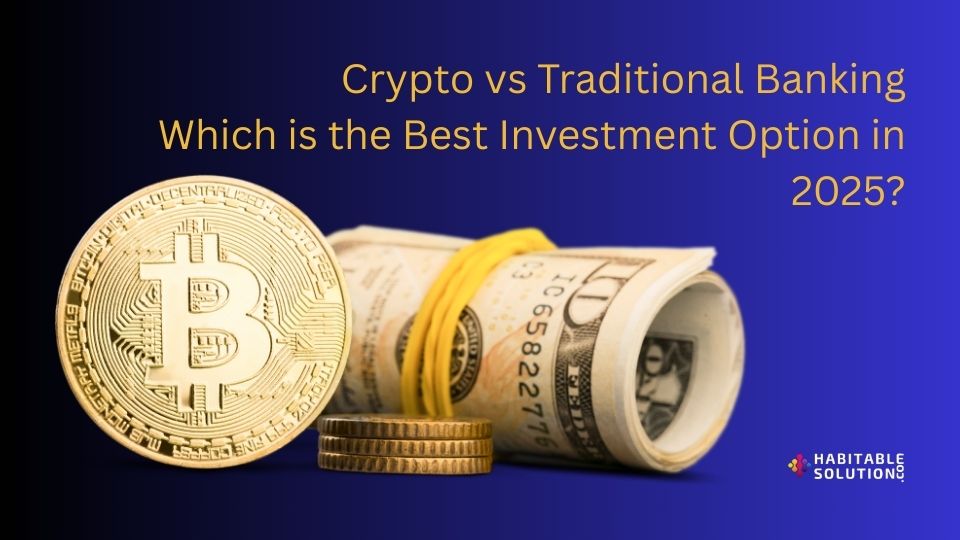Investing has always been a crucial part of financial planning, but with the emergence of cryptocurrencies, investors now face a new dilemma — should they stick to traditional banking investments or venture into the digital currency world? In 2025, this question is more relevant than ever as both investment options come with their own set of advantages and risks. This article will explore the pros and cons of investing in crypto vs traditional financial assets, helping you decide which might be the best investment option for you this year.
Understanding Cryptocurrency Investments
Cryptocurrencies are digital or virtual currencies that leverage blockchain technology to secure transactions. Bitcoin, Ethereum, and other altcoins have gained traction over the past decade, with many investors reaping substantial profits. But is investing in crypto still a good idea in 2025?
Pros of Investing in Crypto:
- High Potential Returns: Cryptocurrencies are known for their volatility, which can lead to significant returns in a short period. Early adopters of Bitcoin, for instance, have seen their investments skyrocket.
- Decentralization: Unlike traditional banking, crypto transactions are decentralized, reducing the influence of central banks and governments.
- Accessibility and Liquidity: Crypto can be traded 24/7 across global markets, providing more flexibility than traditional financial assets.
- Inflation Hedge: With fiat currencies facing inflation, cryptocurrencies are increasingly considered as a hedge against economic instability.
Cons of Investing in Crypto:
- Market Volatility: The same volatility that creates opportunities for profit can also lead to substantial losses.
- Regulatory Uncertainty: Governments worldwide are still grappling with how to regulate cryptocurrencies, increasing the risk of sudden policy changes.
- Security Risks: Crypto wallets and exchanges are susceptible to hacks and cyberattacks.
- Lack of Consumer Protection: Unlike traditional banks, crypto investments are not insured, making them riskier for novice investors.
Traditional Banking Investments
Traditional banking investments include savings accounts, fixed deposits, bonds, mutual funds, and stocks. Despite being less flashy than crypto, these assets have stood the test of time as reliable investment options.
Pros of Traditional Banking Investments:
- Stability and Predictability: Traditional assets offer relatively stable returns with lower risk compared to crypto.
- Regulatory Oversight: Banks and financial institutions are heavily regulated, providing investors with a level of security and consumer protection.
- Income Generation: Fixed deposits and bonds provide regular interest payments, making them ideal for conservative investors.
- Insurance Coverage: In many countries, bank deposits are insured, offering an additional layer of protection.
Cons of Traditional Banking Investments:
- Lower Returns: While safer, traditional assets often yield lower returns than high-risk investments like crypto.
- Inflation Risk: Fixed-income assets may not keep up with inflation, reducing real returns.
- Limited Accessibility: Traditional banking hours and procedures can be restrictive for some investors.
- Centralized Control: Unlike decentralized crypto, traditional banking is controlled by financial institutions, limiting investor autonomy.
Crypto vs Traditional Banking: Which is Better in 2025?
Choosing between crypto and traditional banking investments depends on your financial goals, risk tolerance, and investment horizon. For high-risk, high-reward seekers, crypto can offer substantial returns, but it requires constant monitoring and risk management. On the other hand, conservative investors looking for stable income and security may find traditional assets more appealing.
Conclusion
Both crypto and traditional banking investments have their place in a diversified portfolio. While cryptocurrencies provide an opportunity for exponential gains, they come with heightened risks. Traditional assets, though less exciting, offer stability and regulatory protection. In 2025, a balanced investment strategy that leverages both options might be the wisest approach.




